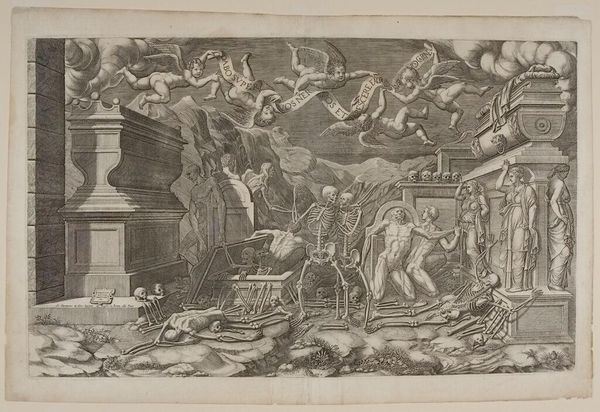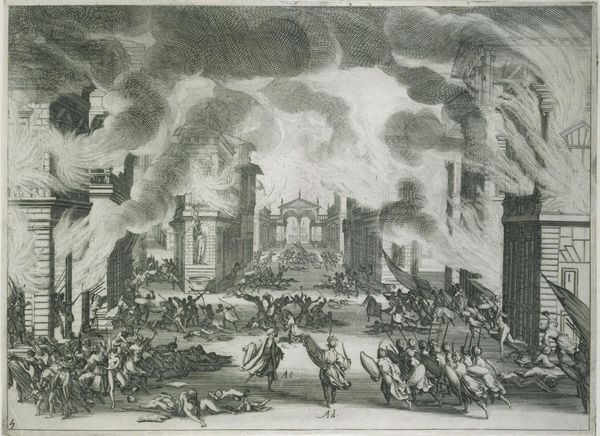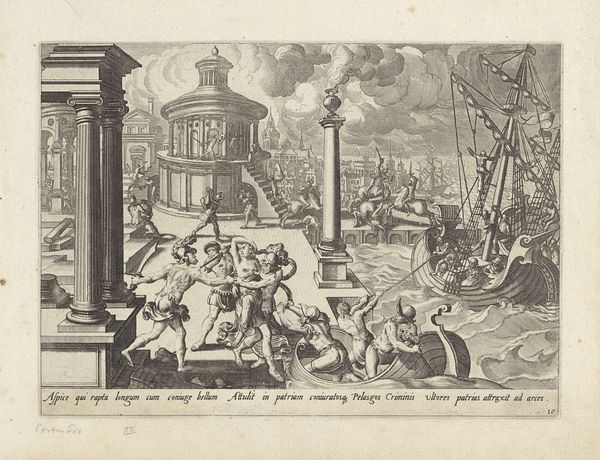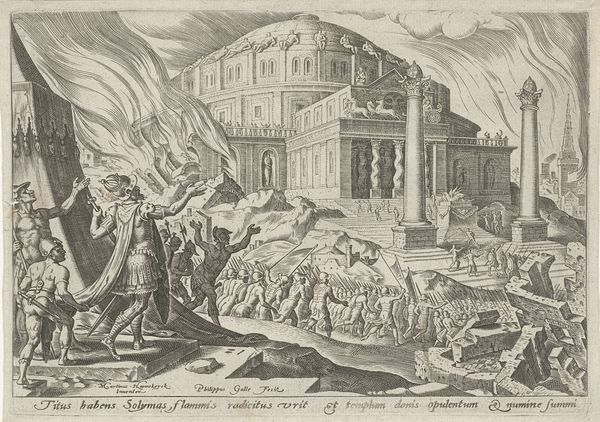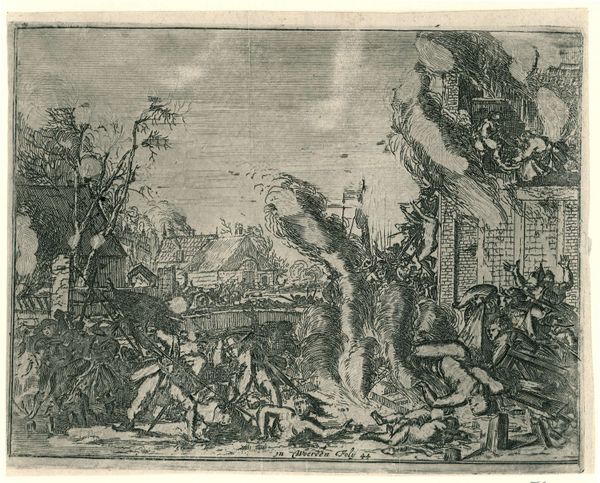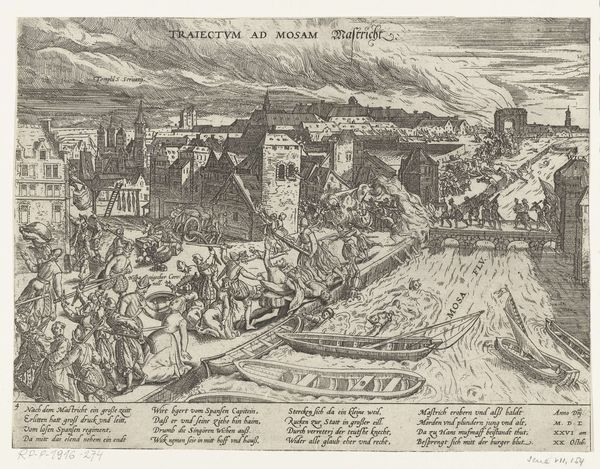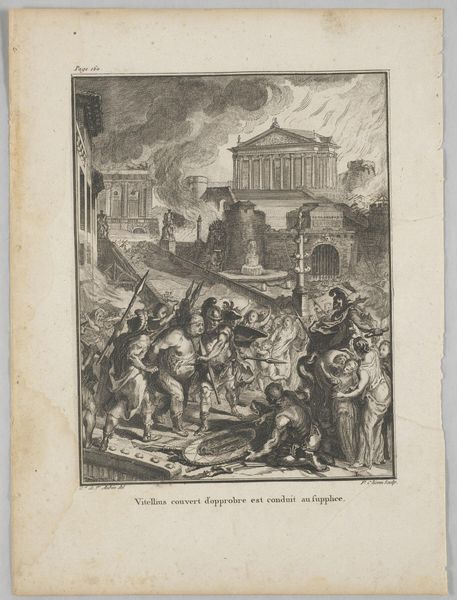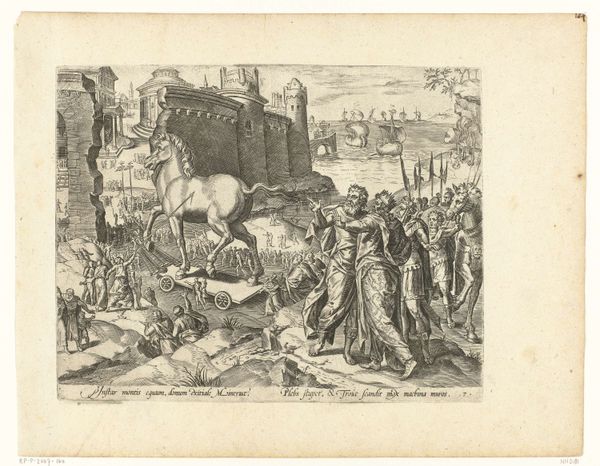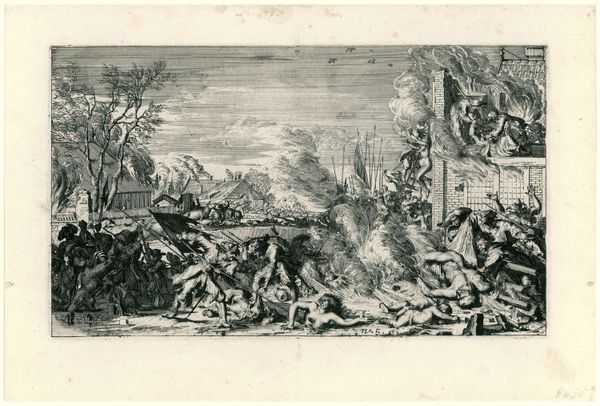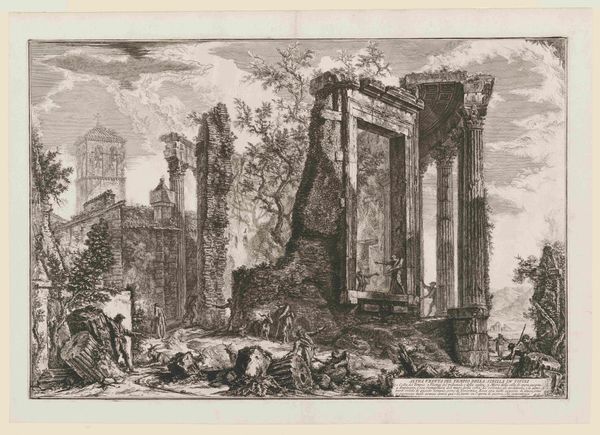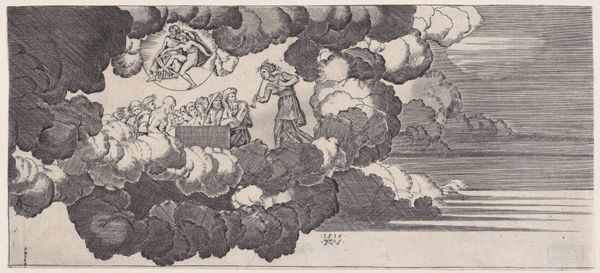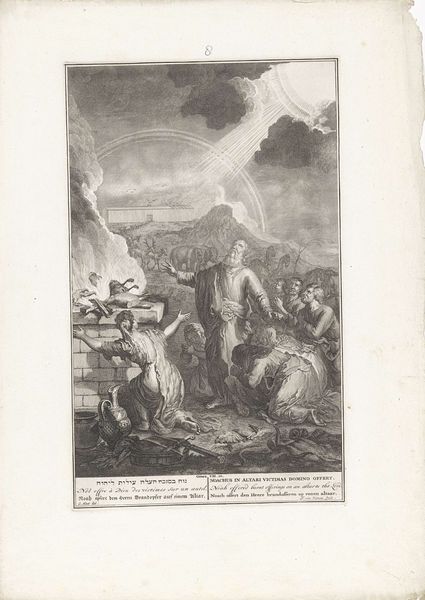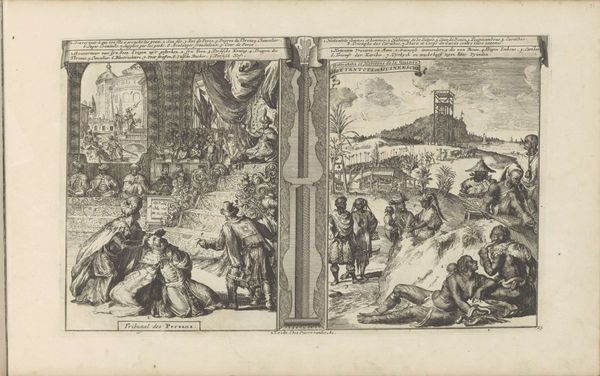
Aeneas redt zijn vader uit het brandende Troje c. 1572 - 1652
0:00
0:00
print, engraving
#
narrative-art
#
baroque
# print
#
old engraving style
#
landscape
#
geometric
#
cityscape
#
history-painting
#
engraving
Dimensions: height 208 mm, width 288 mm
Copyright: Rijks Museum: Open Domain
Editor: Here we have "Aeneas redt zijn vader uit het brandende Troje," or "Aeneas rescuing his father from burning Troy," a print made sometime between 1572 and 1652, attributed to Johannes or Lucas van Doetechum. There's so much destruction packed into a small space! It's chaotic but ordered, a really interesting contrast. How would you interpret the story being presented here, especially considering it's a print? Curator: That's a great observation. It's crucial to remember that prints like these weren't just art objects. They were vehicles for disseminating stories and, importantly, ideologies. Consider the context: this is likely produced in the Netherlands during a period of upheaval, of questioning authority. How might this depiction of Aeneas, a hero fleeing a defeated city to found a new one, resonate with an audience grappling with political and religious change? Editor: So, it's less about the specific moment of rescue and more about the larger idea of displacement and rebuilding? Curator: Exactly! Look at the cityscape – is it a realistic depiction of Troy, or is it a composite, perhaps referencing contemporary cities? The act of referencing or evoking the past to legitimise actions in the present makes the scene deeply political. Who is Aeneas in this analogy, and what "Troy" is the print referencing? These are the questions such a work provokes. Editor: I hadn’t thought about it that way. I was just focused on the action of the narrative and the cool visual of a burning city. Curator: And that's perfectly valid! But seeing it as a historical and political document opens up a whole other level of interpretation. Think about the printing process, too - a means of mass production and distribution and think of how it impacted visual culture in early modern Europe. Editor: I’ll definitely look at prints differently from now on. Thank you. Curator: And I'll keep in mind to spend more time admiring the narrative. A perspective is always valuable and enlightening.
Comments
No comments
Be the first to comment and join the conversation on the ultimate creative platform.
